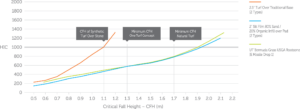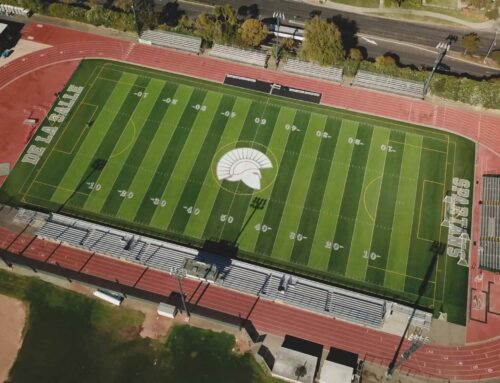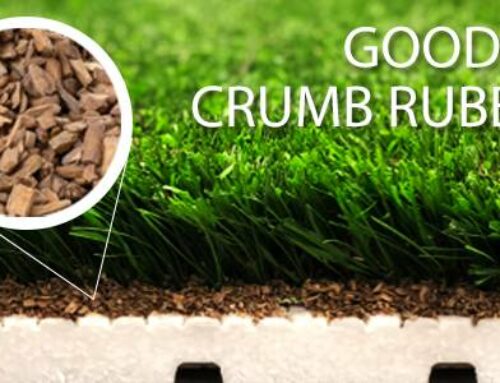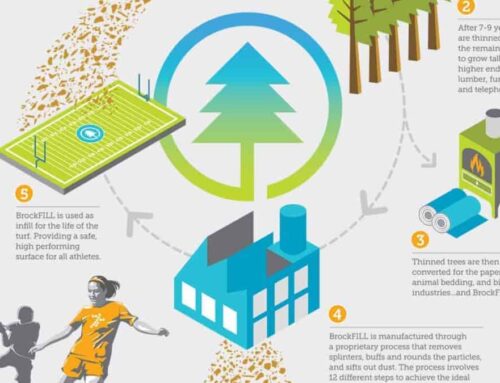With the growing demand for sustainable products across all industries, organic infills are becoming an increasingly popular choice for artificial turf systems. These infills, along with their strong environmental benefits, can provide excellent performance characteristics that make them great for sports fields, playgrounds, and other turf applications.
Here are five ways organic infills can benefit your field and athletes
1. Traction and shock absorption: Organic infills, when paired with an optimal shock pad, are able to absorb shock and provide cushioning for athletes or anyone using the turf. This can help to reduce the risk of injury, especially in sports that involve high-impact movements, such as football, soccer, and rugby. Humans evolved running on natural surfaces, not a rubberized bouncy turf that changes consistency across the field. Organic infills get much closer to making an artificial turf field feel like natural turf underfoot.
1a. Understanding HIC and the chart below: The HIC test correlates with the likelihood and severity of a head injury. The HIC impact test drops a 10.1 lb. hemisphere projectile (curved like a human head) multiple times from increasing heights and determines the surface’s Critical Fall Height. The higher the Critical Fall Height, the safer the surface.

2. Heat reduction: Synthetic infills can absorb and retain heat, making artificial turf systems hotter than natural grass. Some call this the “heat island effect” in neighborhoods where the hottest thing around for miles is the crumb rubber turf field. On the other hand, most organic infills naturally dissipate heat, which helps keep the turf’s surface cooler. This can help to reduce the risk of heat-related injuries and make the turf more comfortable to use, especially in hot climates or during the summer months.
3. Ball roll/reaction: Crumb rubber infill can make a field play faster with its resilient and bouncy nature. Organic infills can make the surface behave more like natural grass. Organic infills affect ball roll, bounce, and speed more naturally by providing the right amount of friction and grip for the ball to react optimally. For example, in a soccer game, this can result in a smoother and more controlled ball roll, allowing for accurate passes, dribbles, and shots.
4. Natural look and feel: Organic infills can provide a more natural feel underfoot, which can translate to the ball feeling more familiar to players. This helps athletes develop better ball-handling skills and adapt their gameplay more easily. Organic infill materials also often have a natural color and texture that closely resembles the look and feel of natural grass; again, this helps the athlete feel more comfortable on the surface.
5. Oncoming regulatory pressure: Some jurisdictions in the USA have already implemented regulations restricting the use of certain synthetic infills, such as crumb rubber, because of environmental concerns. This has led to an increase in the use of organic infills as a viable alternative. This will be especially true in places like the European Union, where a ban on microplastic infills has already been ratified. It’s likely the United States will eventually follow this path as well, benefiting those who have already switched to organic infills.
ABOUT BROCK USA: Brock USA was founded in 1998 as a source for player safety products. Today, our mission remains the same: To protect the athlete and protect the game by inventing innovative products for artificial turf backed by science, research, and education.






